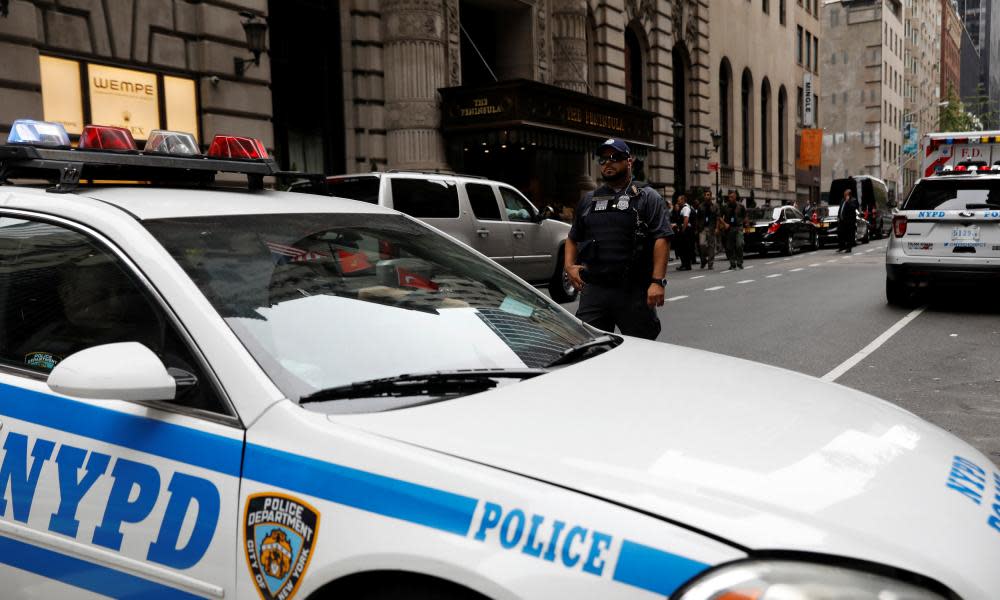US murder rate rose in 2016 – but experts question claims of long-term trend

Murders in the US rose by 8.6% in 2016 following a more than 10% increase the year before, according to new FBI statistics. The homicide rate increased 7.9%. The violent crime rate increased by 3.4% while property crimes dropped.
The murder and violent crime rates remain dramatically below the levels of the early 1990s, when nearly 25,000 Americans were murdered each year. But the two years of increases resulted in a more than 20% increase in the national homicide rate since 2014, the justice department said in a press release accompanying the FBI figures.
“For the sake of all Americans we must confront and turn back the rising tide of violent crime,” attorney general Jeff Sessions said. “And we must do it together.”
Sessions said the country needed to “dismantle criminal organizations and gangs, stop the scourge of drug trafficking, and send a strong message to criminals that we will not surrender our communities to lawlessness and violence”.
In a reference to repeated claims by Sessions, the justice department press release said the FBI data “reaffirms that the worrying violent crime increase that began in 2015 after many years of decline was not an isolated incident”.
Experts, however, called into question whether the increases for 2015 and 2016 would be part of any longer-term trend. Mid-year data from 2017 suggests that national murder numbers may decline this year, or at worst increase only slightly.
With a president and an attorney general who have warned of “American carnage” and called the increase in murders in 2015 a “dangerous permanent trend”, the new crime numbers are likely to be heavily politicized.
“Sadly, Trump will probably seize on these numbers to do more fearmongering,” said Thomas Abt, a Harvard Kennedy School researcher who worked on violence prevention in the Obama justice department.
The murder increase should be greeted with “concern but not panic”, Abt said, adding that it was frustrating that “many more [politicians] will be concerned about how more homicides will impact their own agendas” than will focus on how to fix the violence itself.
While the Trump administration has often linked violence and crime to immigration, Abt said, “every serious examination of immigrants and crime show that immigrants – ‘illegal’ or not – commit less crime than citizens.”
The two years of increases in murders come after the national numbers hit “a level that’s as low as we’ve had in decades”, said James Alan Fox, a criminologist at Northeastern University. Fox said it was not surprising that violence might increase after many years of success in reducing murders.
“Two years is not a relevant trend,” he said.
Since the early 1990s, as the US population has grown, murders have dropped to about 14,000 a year. The estimated number of murders in 2016 is 17,250, with about 3,000 more Americans killed than in 2014. The 2016 national murder rate remains lower than it was in 2008, the last year of the presidency of George W Bush.
There was no national pattern in violence in 2016: New York City saw historic or close to historic lows in shootings and murders, as murders in Chicago spiked. Property crimes decreased as murder, aggravated assault and violent crime overall increased.
Large cities saw the biggest rise in violent crimes – those with more than one million inhabitants witnessed a 7.2% rise. Places with fewer than 10,000 inhabitants saw violent crimes rise by just 0.2%.
The FBI cautioned against city-to-city comparisons, stating that such rankings “often create misleading perceptions adversely affecting communities and their residents”.
State-to-state comparisons are fairer and the differences are stark. For example, violent crime rose 32.4% in Vermont and fell 5.3% in Florida. Here again, though, the comparisons are imperfect. In smaller state populations like Vermont, percentage changes can look more dramatic.
The report also included race and ethnicity data about those arrested in 2016. Of 8.4 million arrests, 69.6% were of white individuals and 27% were black or African American. Of the US population, 77% is white and 13% black.

 Yahoo News
Yahoo News 
